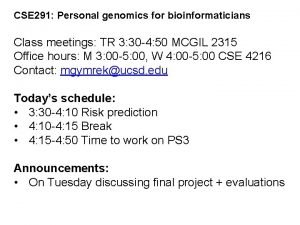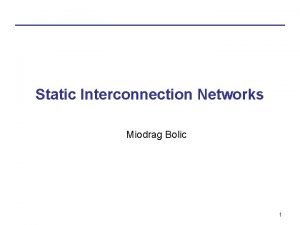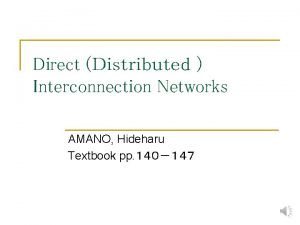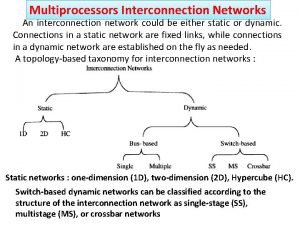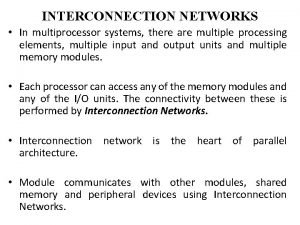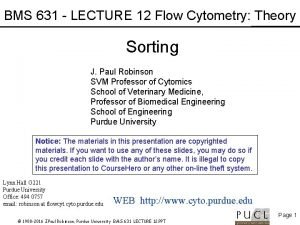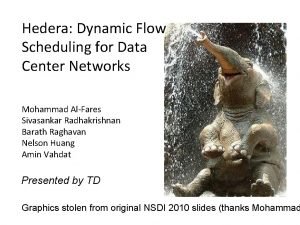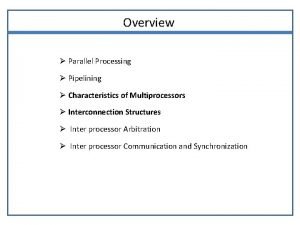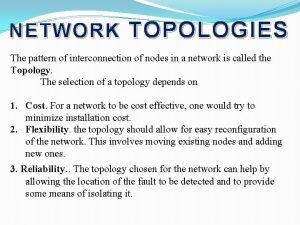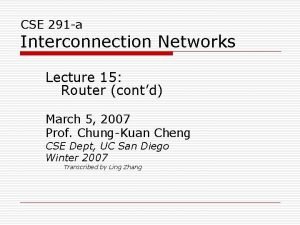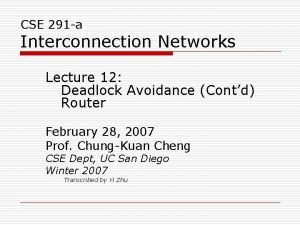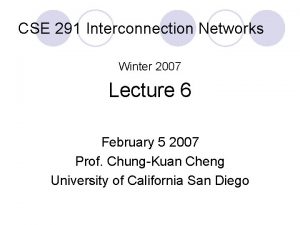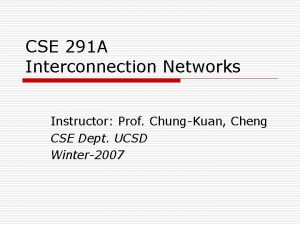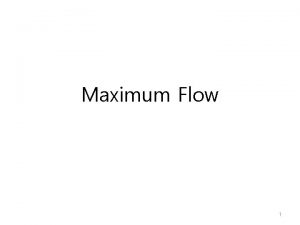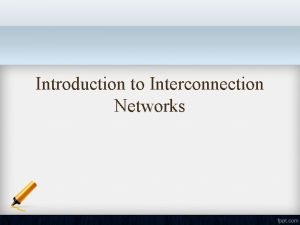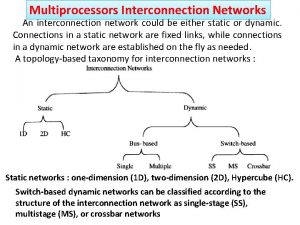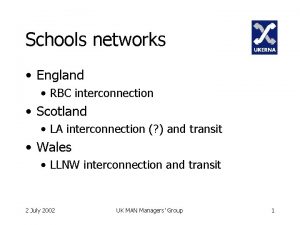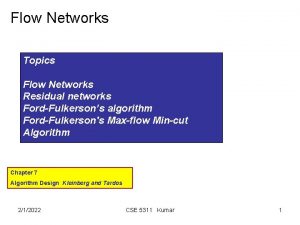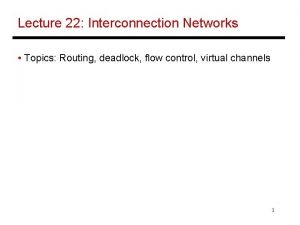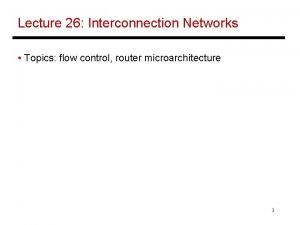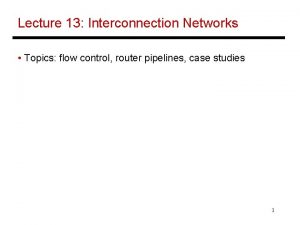CSE 291 a Interconnection Networks Lecture 10 Flow
















- Slides: 16

CSE 291 -a Interconnection Networks Lecture 10: Flow Control February 21, 2007 Prof. Chung-Kuan Cheng CSE Dept, UC San Diego Winter 2007 Transcribed by Thomas Weng

Topics • • • Introduction Bufferless Flow Control Buffered Flow Control - Cut-through - Wormhole - Virtual Channel

Introduction • • Objective: Bandwidth and Latency Resources: Buffer and Channel State Switch Channel Buffer

Unit of Messages Message is too long, cut up message Message Packet Basic chunk is Packet RI SN Header Body (content) Tail (indicates packet is done) RI = Routing Information SN = Sequence Number Packet should be reasonably long so we minimize overhead.

Flit and Phit Packet RI SN Tail Flit (Flow Control Digit) Type Virtual Channel H, T, or H&T, or Body Phit (Physical Transfer Digit) Typical Range Phits Flits Packet 8 bits 1 -64 bits 16 -512 bits 1 K 128 bits– 512 K

Bufferless Flow Control • What if we have no buffer? Why not have buffer? Less power and improved latency. • Three methods: • 1. Drop the data (easiest way) 2. Misroute the data (treat data like hot potato) 3. Dropless approach (reservations)

Drop the Data Drop the data: Tell sender you dropped data 1) Nack – Negative Acknowledgement (Tell sender you dropped the data) 2) Ack – Acknowledgement (The sender resends if Ack is not received within timeout period) 0 0 cbao 0 c 0 h 8 f 0 1 h 1 Drop ba dropped data Reverse Channel: Ack and flow control signals are sent in a reverse channel

Drop the Data (cont) Suppose channel 2 sent and was rejected 0 F H B B B T R 1 F H B B B T N H B B R B A H B B B T N 2 F H R A B H B B B T N A 3 F H B B B T R A 0 1 2 3 Dropped data simplifies things, but pay a price by resending data. Latency is long if data was rejected.

Dropless Flow Control: Request propagates from source to destination and allocates the channel. Ack is transmitted back to the source. Packet is sent. A tail flit is sent to de-allocate the channel. Channel 0 1 2 R A R D A R 3 A R 4 hops latency / hop T T D A Total time T 0 = 3 Htr + L/b D D A R T T D bandwidth length of packet T

Buffered Flow Control 1. Store & Forward 2. Cut-through 3. Wormhole 4. Virtual Channel

Store & Forward 1. Store & Forward Flow Control: Each node receives a packet and then sends it out. Channel 0 H B B B 1 2 3 T 0 = H(tr + L/b) T H B B B T

Cut-through 2. Cut-through Flow Control: Each node starts to send the packet without waiting for the whole packet to arrive. Cut-through is more efficient approach. 1) Good performance 2) Large buffer sizes, consumes more power Suppose in the middle, we get stuck 0 1 2 3 H B B B T 0 = Htr + L/b 0 1 2 T 3 H B B B T |---- Not Ready ----| H B B B T

Wormhole 3. Wormhole Flow Control: Main difference is that we just have a little buffer, don’t need to store the entire packet. In terms of performance & bandwidth, it’s better than cut-through. States: Idle, Wait, Active I TBBH L 0 1 W U TBB H L 0 1

Wormhole (cont) W U TB B H L 0 T A U B B U 0 1 A U T H 1 U 0 1 BBH In: Out: H B B T

Virtual Channel 4. Virtual Channel: Try to split channel in time domain. By doing so we can fully utilize channel since we don’t waste it by holding it. Wormhole + Virtual Channel = Winner

Virtual Channel (cont) 1 A B 2 3 4 Input a Input b a n a 1 a 2 a 3 a 4 bn b 1 b 2 b 3 b 4 Interleaved Winner Takes All a n bn a 1 b 1 a 2 b 2 a 3 b 3 a 4 b 4 a n a 1 a 2 a 3 a 4 bn b 1 b 2 b 3 b 4
 Cse 291
Cse 291 Cse 291 ucsd
Cse 291 ucsd Cse 291
Cse 291 Miodrag bolic
Miodrag bolic Direct interconnection networks
Direct interconnection networks Dynamic interconnection network are
Dynamic interconnection network are Interconnection networks in multiprocessor systems
Interconnection networks in multiprocessor systems Ceng 291
Ceng 291 Swms meaning
Swms meaning 01:640:244 lecture notes - lecture 15: plat, idah, farad
01:640:244 lecture notes - lecture 15: plat, idah, farad A switched wan is normally implemented as a
A switched wan is normally implemented as a Basestore iptv
Basestore iptv Flow cytometry lecture
Flow cytometry lecture Hedera: dynamic flow scheduling for data center networks
Hedera: dynamic flow scheduling for data center networks Chordal ring
Chordal ring Multiprocessors are classified as
Multiprocessors are classified as Advantages for bus topology
Advantages for bus topology
